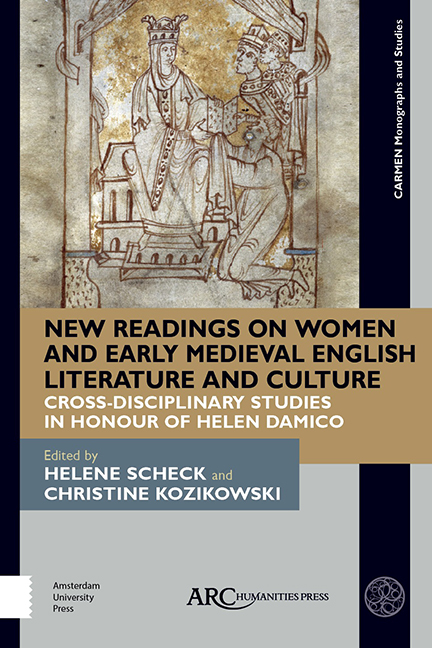 New Readings on Women and Early Medieval English Literature and Culture
New Readings on Women and Early Medieval English Literature and Culture Book contents
- Frontmatter
- Contents
- List of Illustrations
- List of Abbreviations
- Note from the Editors
- Introduction: Feminism and Early English Studies Now
- PART ONE LITERACY AND MATERIAL CULTURE
- PART TWO ENGENDERING MARRIAGE AND FAMILY
- PART THREE WOMEN OF THE BEOWULF MANUSCRIPT
- PART FOUR WOMEN AND ANGLO-SAXON STUDIES
- Select Bibliography
- Index of Manuscripts
- General Index
3 - Embodied Literacy: Paraliturgical Performance in the Life of Saint Leoba
Published online by Cambridge University Press: 20 November 2020
- Frontmatter
- Contents
- List of Illustrations
- List of Abbreviations
- Note from the Editors
- Introduction: Feminism and Early English Studies Now
- PART ONE LITERACY AND MATERIAL CULTURE
- PART TWO ENGENDERING MARRIAGE AND FAMILY
- PART THREE WOMEN OF THE BEOWULF MANUSCRIPT
- PART FOUR WOMEN AND ANGLO-SAXON STUDIES
- Select Bibliography
- Index of Manuscripts
- General Index
Summary
WHILE STILL A novice at Wimborne, the future saint Leoba (ca. 710– 782) dreams of drawing an immensely long purple thread from her throat:
quod apprehensum manu cum extrahere conaretur, prolixius coepit extendi, et velut ex interioribus viscerum procederet, paulatim crescebat in maius et augmenta sui capiebat. Cum autem euberante material colligendo manum impleret et filum nihilominus ex ore dependeret, globum ex eo rotundo scemate volvendo formavit.
(It seemed to her that when she took hold of it with her hand and tried to draw it out there was no end to it; and as if it were coming from her very bowels, it extended little by little until it was of enormous length. When her hand was full of thread and it still issued from her mouth she rolled it round and round and made a ball of it.)
As an anonymous (but obviously communally important) “soror quaedam maturae aetatis, quae ex eventu rerum quas saepe praedixerat prophetiae spiritum habere noscebatur” (aged nun who was known to possess the spirit of prophecy) interprets it, that thread more explicitly signifies “doctrina sapientiae […] ex illius corde procedans” (the wise counsels she will speak from the heart). And “porro globus, qui volvendo conficitur et rotunditate sui volubilis est, mysterium exprimit verbi divini, quod per os actusque praedicantium volvitur et nunc per activam vitam in imis versatur, nunc per contemplativam in sublimia erigitur” (the ball which she made by rolling it round and round signifies the mystery of the divine teaching, which is set in motion by the words and deeds of those who give instruction and which turns earthward through active works and heavenward through contemplation). Both this dream and its interpretation— as reported in her vita, written by Rudolf of Fulda (ca. 836) some fifty years or so after her death— testify in multiple ways to the literacy and textual practices of Leoba and her fellow monastic women, both those among whom she was raised and (as importantly) those to whom, like the otherwise unknown Hadamout specifically addressed, this vita is offered as a model for behaviour and self-construction.
- Type
- Chapter
- Information
- New Readings on Women and Early Medieval English Literature and CultureCross-Disciplinary Studies in Honour of Helen Damico, pp. 61 - 74Publisher: Amsterdam University PressPrint publication year: 2019


